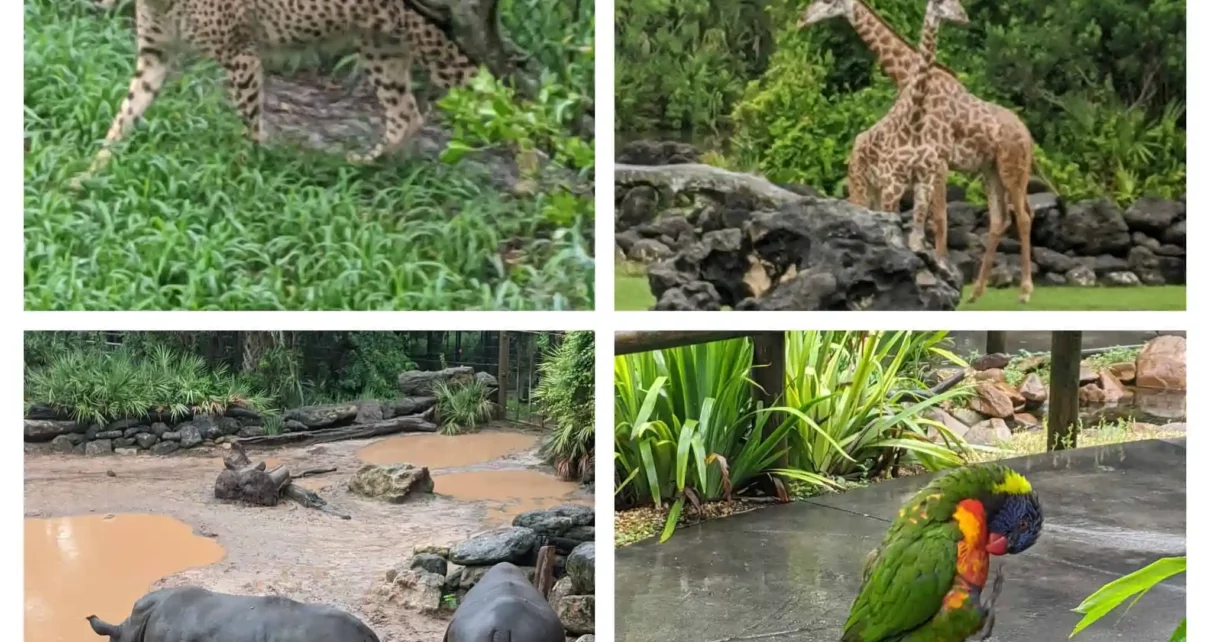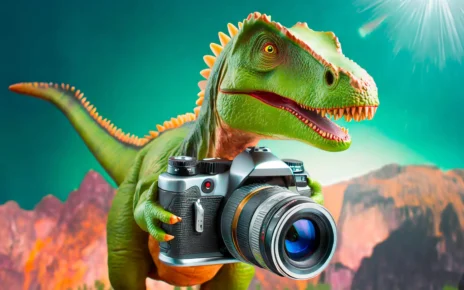These monkeys, reptiles, and birds don’t belong in Florida. Should we kick them out?
/cdn.vox-cdn.com/uploads/chorus_image/image/72659918/lede_Benji.0.jpg)
FORT LAUDERDALE, Florida — I was told the monkeys would be here, although nothing about this spot seemed particularly suitable for wildlife. On a stifling morning in late July, I stood in a large parking lot near Fort Lauderdale-Hollywood International Airport, about 40 miles north of Miami. Cars drove in and out. Planes passed low overhead. It reeked of gasoline.
The only visible natural habitat was a sliver of forest, just a few hundred feet wide, wedged between the paved lot, a field of oil tanks, and a highway. I couldn’t find monkeys in the lot, so I tried my luck in the forest.
It turned out to be more of a swamp. With each step, thick mud crept past my ankles, making it difficult to move. A thorny underbrush etched puffy red lines into my bare legs.
Half an hour in, when I was about to turn back in pursuit of air conditioning and a fresh pair of socks, I heard a rustling overhead. I froze in place and looked up. There, through the branches, I saw the unmistakable face of a monkey.
:no_upscale()/cdn.vox-cdn.com/uploads/chorus_asset/file/24896252/02_Benji.jpg)
To see exotic animals in Florida, one could visit Disney’s Animal Kingdom, Busch Gardens, or Zoo Miami. Or they could just step outside.
The Sunshine State is utterly brimming with nonnative species. More than 500 of them have been reported here, which is more than in any other state, and many of them are considered “invasive,” meaning they harm humans or ecosystems. For most of their evolutionary history, these species have never set foot in Florida — they’ve never been near a Publix, or Magic Kingdom, for that matter.
In the last few decades, Florida has become an unmanaged zoo, an uncontrolled experiment. And each year, the decision of what to do with it gets harder.
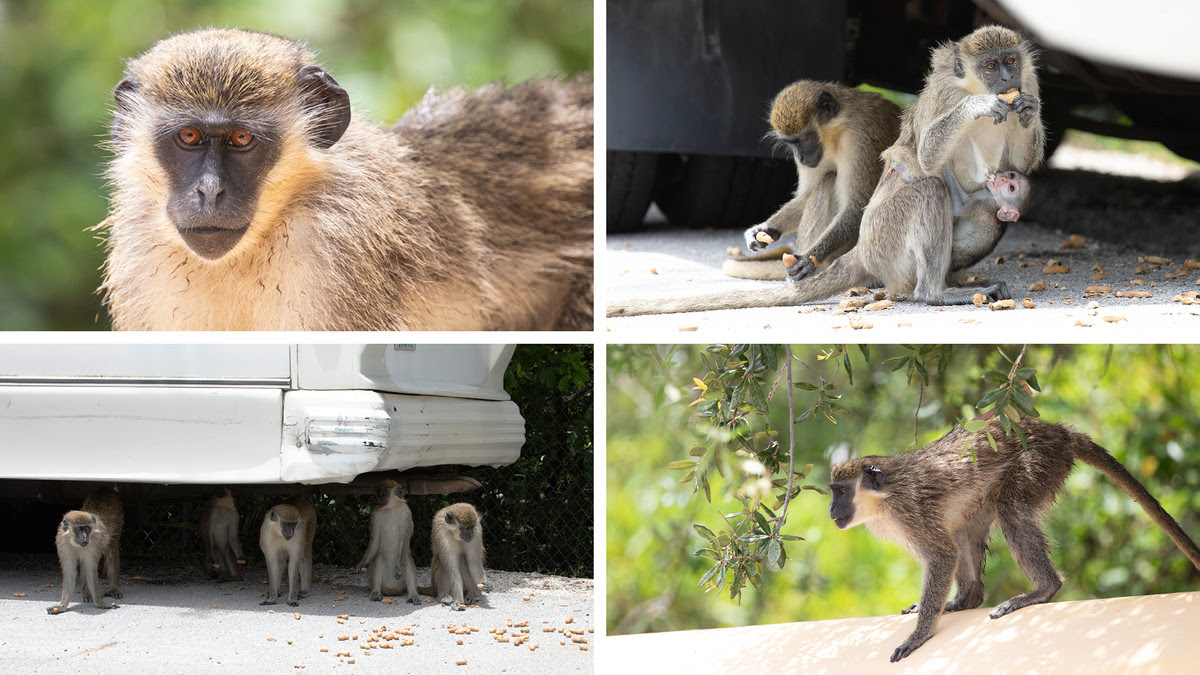:no_upscale()/cdn.vox-cdn.com/uploads/chorus_asset/file/24896420/Collage_1_V2.png)
The monkeys I spotted were vervets, a species native to Africa. That afternoon, I followed a troop from the swamp back to the parking lot, where they lounged in the shade under a parking shuttle and fed on peanuts that someone had put out. One of the monkeys was carrying an infant. A different population of monkeys — a group of rhesus macaques, a species native to Asia — lives in a state park north of Orlando. Some of those are infected with a form of herpes that can be deadly to humans.
While monkeys are still somewhat rare in this part of the world, there’s another group of nonnative animals that’s absolutely everywhere: the reptiles. The iguanas and pythons, geckos and basilisks, anoles and agamas. In South Florida, the ground literally moves with green and brown lizards. The trees do, too; some of them are home to color-changing chameleons native to Africa and the Middle East.
How we reported this story
Reporter Benji Jones traveled to Florida and spent a week observing wildlife near Orlando, Fort Myers, Miami, and Fort Lauderdale, often shadowing researchers as they studied giant lizards and other animals. He kayaked in a springfed river, trekked through forests, and cruised dark roads at night, ultimately spotting more than 20 nonnative species.
Benji also interviewed more than a dozen biologists, reptile researchers, and other experts from the University of Florida, the University of South Florida, Florida International University, and the Conservancy of South Florida. Special thanks to Noah Gripshover for taking Benji on a tour of Miami’s nonnative animals. This reporting was supported, in part, by the BAND Foundation, which provides funds for biodiversity reporting projects at Vox.
These creatures are unwelcome — and in some cases, despised. Exotic species are blamed for harming local ecosystems and damaging human property, so the state is trying to get rid of them. It’s gone as far as turning eradication into a sport. Florida’s Fish and Wildlife Commission (FWC), the state wildlife agency, sponsors “rodeos,” events where people compete to kill as many of a certain invasive species as possible. At times, Florida’s battle against exotic species turns violent. Videos online show people hunting lizards, frogs, and other species with blowguns, air rifles, and slingshots, all in the name of saving the environment.
For the most part, these efforts aren’t working. And it’s not clear what could. By transforming the natural environment, and covering it with buildings, lights, and lawns, we’ve created the perfect place for many of these exotic species to breed and thrive. Meanwhile, nonnative animals continue to leak into the environment from Florida’s gargantuan pet industry. Eradication has become a game of whack-a-lizard.
That leaves Florida in a tough position: Killing sprees are often futile and even cruel, and yet the state can’t simply let all introduced species run rampant. Florida is a zoo. Are its keepers up for the job?
This question brought me to Florida during a heat wave in July, where I went on a safari, of sorts — an invasive species safari. My aim was to travel around the state in search of nonnative animals and in the process, answer another, more basic question: Why are there so many exotic creatures in Florida to begin with?
A major advantage of this kind of safari is that you don’t have to travel far to find wildlife. One afternoon, I was walking around a gated community in a suburb of Miami. I passed a man unloading groceries from his trunk and another resident walking his dog. Nothing stood out, except for the giant reptile lying in a pile of lawn waste. It was an Argentine black and white tegu, a species native to South America that can grow nearly 5 feet long.
:no_upscale()/cdn.vox-cdn.com/uploads/chorus_asset/file/24887556/08_Benji.jpg)
Like most of Florida’s nonnative reptiles and amphibians, tegus were brought to the state by the local pet trade. The industry here — made up of pet breeders and sellers — is among the largest in the country, and this is especially true for reptiles, as journalist Bryan Christy writes in his 2008 book The Lizard King. Florida is a place where you can drive into the country and stumble upon snake farms off of dirt roads.
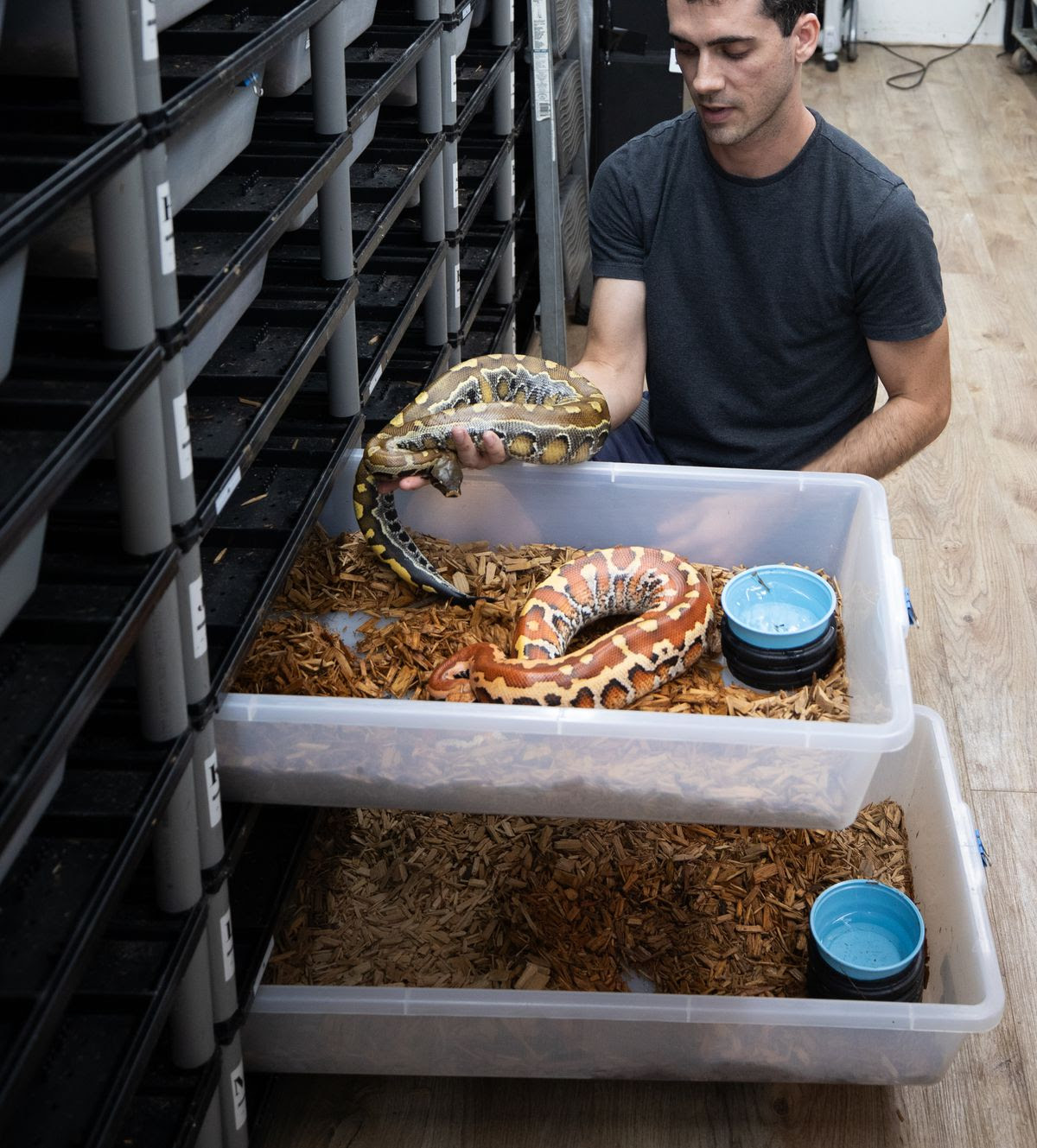:no_upscale()/cdn.vox-cdn.com/uploads/chorus_asset/file/24896463/Snake_FL_Zoo.jpg)
Many scientists blame the pet trade for releasing exotic animals into Florida. Sometimes those introductions are an accident: Hurricanes and other storms can destroy reptile breeding facilities, allowing the animals to escape. In other instances, the problem is more like carelessness. In South Florida, for example, tegus, among the most popular reptile pets in the US, escaped from a breeding facility “where they were kept negligently in open cages,” Frank Mazzotti, a professor of ecology at the University of Florida, wrote in the book Exotic Amphibians and Reptiles of the United States.
Sometimes, however, nonnative species are just deliberately put into the environment. In South Florida, there’s such a thing as “chameleon ranches’’ — outdoor spots where people raise chameleons to sell. As opposed to breeding these animals indoors, which can be challenging and expensive, people will place them in trees outside, where the animals will reproduce on their own. Outside, chameleons are easier to raise. They’re also easier to lose. (Chameleons are famously good at hiding.)
One night after dark, I drove to a rural neighborhood in southwest Florida with a pair of reptile researchers who had agreed to help me find chameleons. We parked by a canal on a quiet road with a few small homes. The waterway was lined with untidy clusters of palm trees and bushes, and it was there that we searched for these long-tongued lizards.
Chameleon ranches tend to be unmarked and somewhat secretive. Putting nonnative animals outdoors is illegal and pet chameleons are pricey; ranchers don’t want people just taking them for free. Fortunately, we had a strong lead. One of the researchers had found sightings of chameleons here on iNaturalist, an app where nature enthusiasts record animal observations. It wasn’t clear that this was an active ranch, but we were certain there were chameleons to find.
Of all of the stops on my safari, chameleon ranches, I was told, would be the most dangerous. Although our proximity to the canal meant we were likely on county property, people are “very protective” of their chameleon spots, Natalie Claunch, a reptile researcher at the University of Florida, told me before my trip. (She was not one of the two researchers with me that night.) I was advised to wear a reflective vest, which might make me appear more official.
Adding to this risk: You have to search for chameleons at night. Although these animals expertly blend into leaves during the day, chameleon skin appears pale under the harsh beam of a flashlight, making them much easier to spot.
:no_upscale()/cdn.vox-cdn.com/uploads/chorus_asset/file/24887545/10_Benji.jpg)
We almost immediately found something exotic — not a chameleon, but a Cuban tree frog, which was perched on a palm tree branch near the canal. Cute, with big eyes and toes, it’s one of the most abundant nonnative species in Florida, with a croak that sounds like a squeaky shoe.
We shined our flashlights on the underside of leaves and on the tips of tall grasses. I walked through more spiderwebs than I could count. A screech owl flew by.
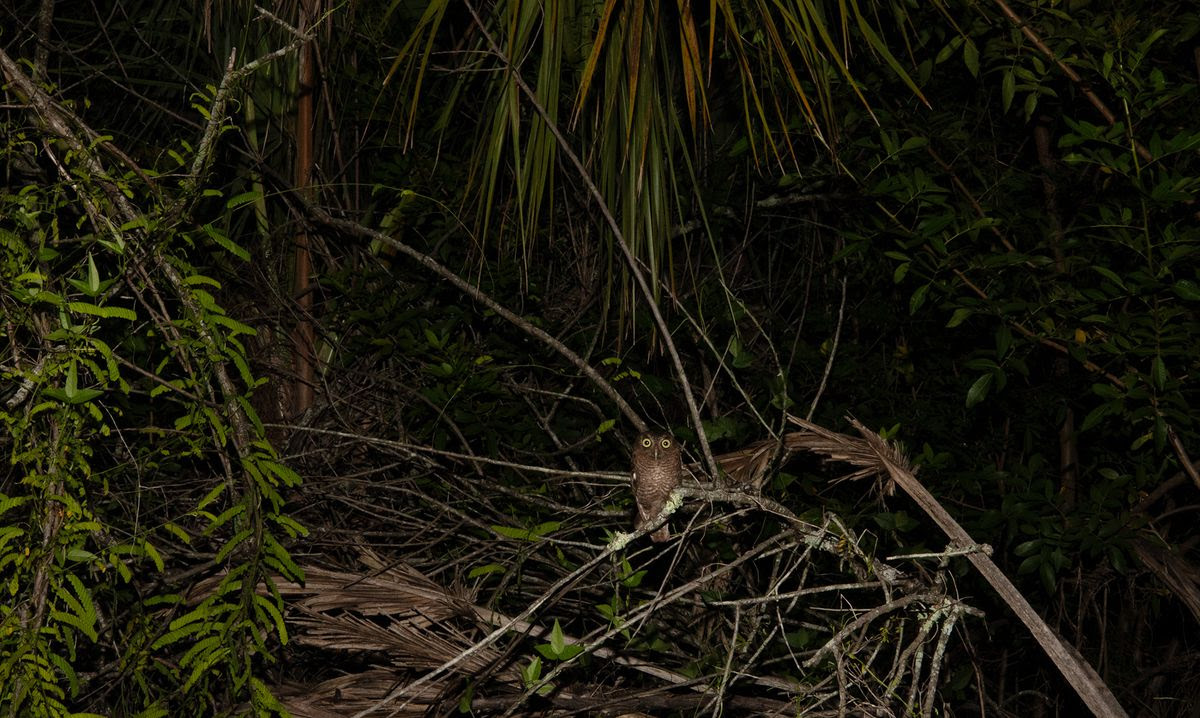:no_upscale()/cdn.vox-cdn.com/uploads/chorus_asset/file/24896551/Owl_Benji_01.jpg)
Not long into our search, I turned over a dead palm tree leaf that was still attached to the tree. There, tucked inside, was a veiled chameleon. Roughly a foot long, with a fin-like protrusion atop its head, the lizard was shaded in muted greens, yellows, and oranges. The colors grew brighter as we drew closer. The chameleon’s eyes — which famously can move independently from each other — were striped like a circus tent.
I could easily see why someone might want one of these as a pet. They’re stunning, timid creatures.
:no_upscale()/cdn.vox-cdn.com/uploads/chorus_asset/file/24887572/11_Benji.jpg)
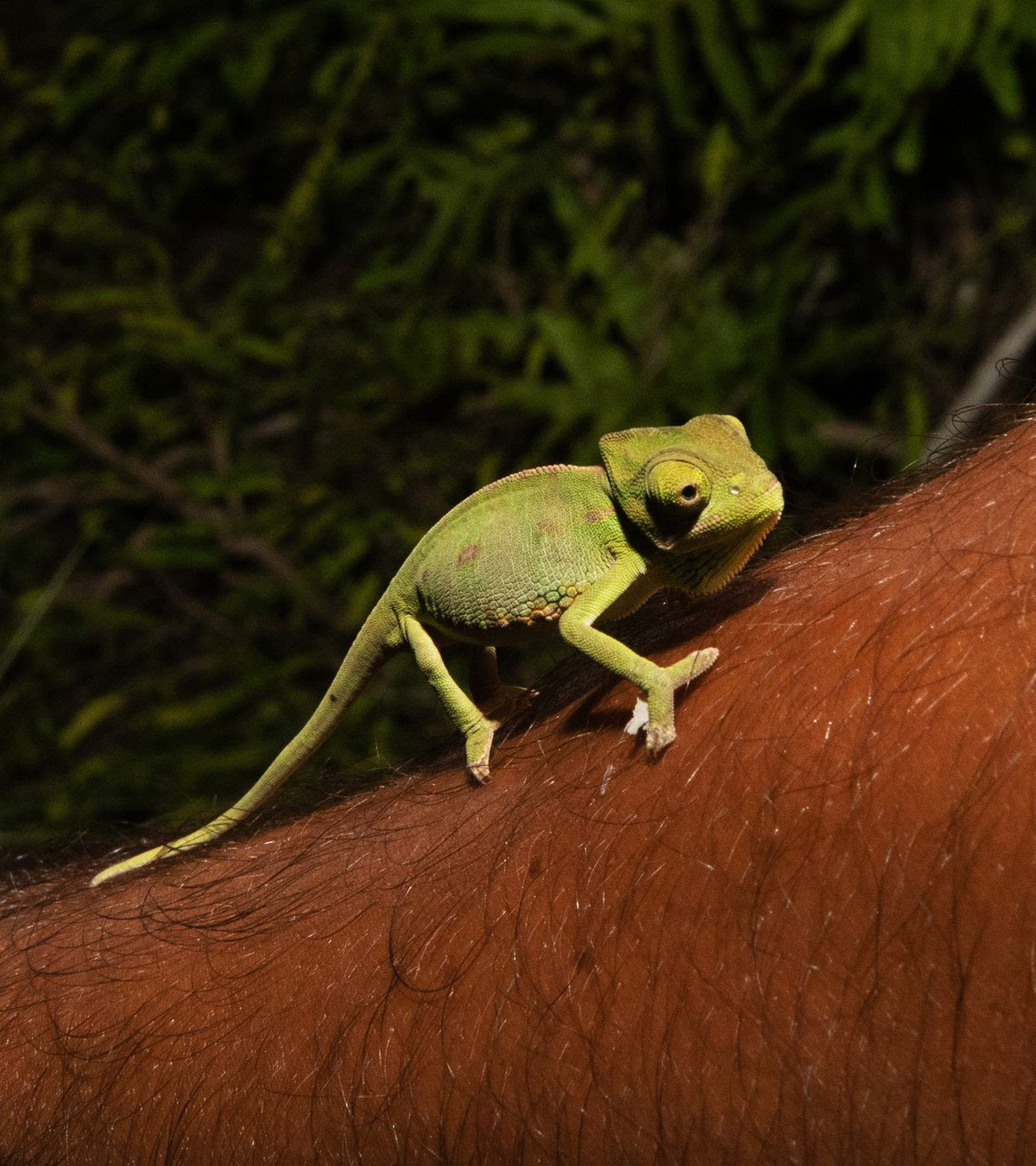:no_upscale()/cdn.vox-cdn.com/uploads/chorus_asset/file/24896417/New_chameleon_Benji.jpg)
The pet trade introduces exotic animals to Florida, but it’s the climate that has allowed them to proliferate. Release an iguana in New York City and it won’t make it through the winter; it’s too cold. Let one go here, in tropical Florida, and it might start a family. All it takes for animals to get a foothold is an introduction or two.
Not only pet breeders but also pet owners have helped stock the state with exotics. Pet stores have been known to sell animals to people who don’t have the knowledge or equipment to care for them. Green iguanas can grow over 5 feet long. Burmese pythons can reach more than 15 feet, and they feed on mice, rats, and rabbits. Once these pets become too difficult to care for, people might release them into the environment.
The state’s peculiar culture likely also plays a role. There’s a sense in Florida that you can do whatever you want and not be bothered, said Adam Rosenblatt, a biologist at the University of North Florida. “There’s an attraction of people who want to live a lifestyle that maybe wouldn’t be acceptable everywhere else,” he said. “Maybe that lifestyle involves having lots of large snakes in your house.”
Two other researchers told me that the idea of “Florida man” is real, referring to people in the state with behaviors or attitudes that are odd and perhaps irrational and may include things like throwing an alligator through a Wendy’s drive-through window or getting arrested with a monkey attached to their chest. Yet it’s hard to say whether this oddball culture fuels the spread of nonnative species.
Exotic animals have taken other routes into Florida, as well. Those monkeys in Fort Lauderdale, for example, descended from a group of primates that escaped from a zoo and research facility many decades ago. Cuban tree frogs, meanwhile, likely arrived as stowaways in shipping crates. But no matter their path here, several hundred exotic species now live in Florida. Should the state kick them out?
Nonnative species have caused an immense amount of destruction worldwide. Some of the most visible ecological damage is in Australia, where they are the primary cause of extinction. Australia’s invasive feral cats alone are largely responsible for the extinction of more than 20 mammals, including the desert rat-kangaroo and a species of bandicoot.
Exotic animals can also harm economies, whether they are invasive mussels that clog pipes in the Great Lakes or insects that damage crops globally. Between 1960 and 2020, invasive species cost the US about $1.2 trillion in losses, damages, and management, according to a study published last year. Fire ants, “killer” bees, and a species of mosquito that spreads yellow fever, dengue fever, and chikungunya were among the most costly, the study found. Worldwide, the economic cost of invasive species has at least quadrupled every decade since 1970, according to a new report by the United Nations.
:no_upscale()/cdn.vox-cdn.com/uploads/chorus_asset/file/24887563/14_Benji.jpg)
Some of Florida’s exotic animals are undoubtedly destructive, too.
Although they appear angelic, gliding through the ocean with delicate, fan-like fins, nonnative lionfish, for example, threaten coral reefs by preying on native species. The state is also home to as many as 17 nonnative mosquitoes. Some of them spread nasty diseases like dengue fever, including the costly one above.
Then there are the Burmese pythons. First introduced from Asia by the pet trade in the 1900s, these snakes are now widespread in South Florida, where they are known to grow extremely large. In July, a man caught a record 19-foot Burmese python that weighed 125 pounds in South Florida.
Big snakes have big appetites, which does not bode well for Florida’s native species. Sharp declines in the sightings of raccoons, opossums, bobcats, and other common mammals have coincided with the spread of Burmese pythons, one 2012 study found. Another study, published a few years later, found that these snakes are driving down the population of native marsh rabbits in Everglades National Park. That could have negative knock-on effects across the broader ecosystem, as predators like panthers depend on smaller mammals for food.
Burmese pythons are “public enemy number one,” said Ian Bartoszek, a wildlife biologist at the Conservancy of Southwest Florida who has been tracking and removing pythons for more than a decade. “Do not underestimate the Burmese python.”
Bartoszek and other researchers are confident that “Burms,” as locals call them, are harming Florida’s native ecosystem. Yet for many of Florida’s other nonnative species, the story is far more complicated.
:no_upscale()/cdn.vox-cdn.com/uploads/chorus_asset/file/24887586/13_Benji.jpg) The skeleton of a 14-foot female Burmese python. Benji Jones
The skeleton of a 14-foot female Burmese python. Benji Jones
In a vacant lot by a canal in Cape Coral, a city on Florida’s west coast, Ali Mulla held an antenna in front of his body. He was tracking one of Florida’s largest lizards.
A graduate researcher at the University of South Florida, Mulla is studying a species native to Africa called the Nile monitor lizard, which arrived decades ago by way of the pet trade. It’s a semiaquatic reptile, with a long, forked tongue, that can reach more than 6 feet from head to tail.
:no_upscale()/cdn.vox-cdn.com/uploads/chorus_asset/file/24887584/15_Benji.jpg)
Like many of Florida’s nonnative reptiles, Nile monitor lizards don’t have a great reputation. Some news reports say these animals are aggressive and terrorize families. Tabloids have suggested they’re capable of eating children. FWC, meanwhile, says they pose a “very high” risk to native wildlife, such as by outcompeting or consuming local species. The state also claims that monitor lizards damage human infrastructure like sidewalks and seawalls by digging burrows and that they pose a risk to human safety.
Mulla, a former assistant biologist at FWC, is testing some of these assumptions and trying to answer other basic questions, such as where they live. To observe their behavior, he’s had radio-tracking devices implanted in some of the animals in Cape Coral. Those devices send signals to a receiver that’s attached to the antenna.
I joined Mulla on a muggy afternoon during his field season to locate a couple of these lizards. The idea is that as he gets closer to the transmitter — closer to the lizard — the receiver produces louder and louder beeps. These animals aren’t just lumbering down city streets; they’re skittish and highly elusive, often hiding underground and underwater. The receiver would be beeping loudly and there’d be nothing but fallen branches and some green iguanas in front of us.
Later that afternoon, the receiver indicated that we were on top of a monitor. I crept toward the edge of the canal, trying to avoid breaking sticks beneath my feet, and there on the bank, I finally saw one: a small monitor, just over 2 feet long, with striking yellow and black scales. Then, with a splash, it was gone.
:no_upscale()/cdn.vox-cdn.com/uploads/chorus_asset/file/24887613/Vox_Benji_01.jpg)
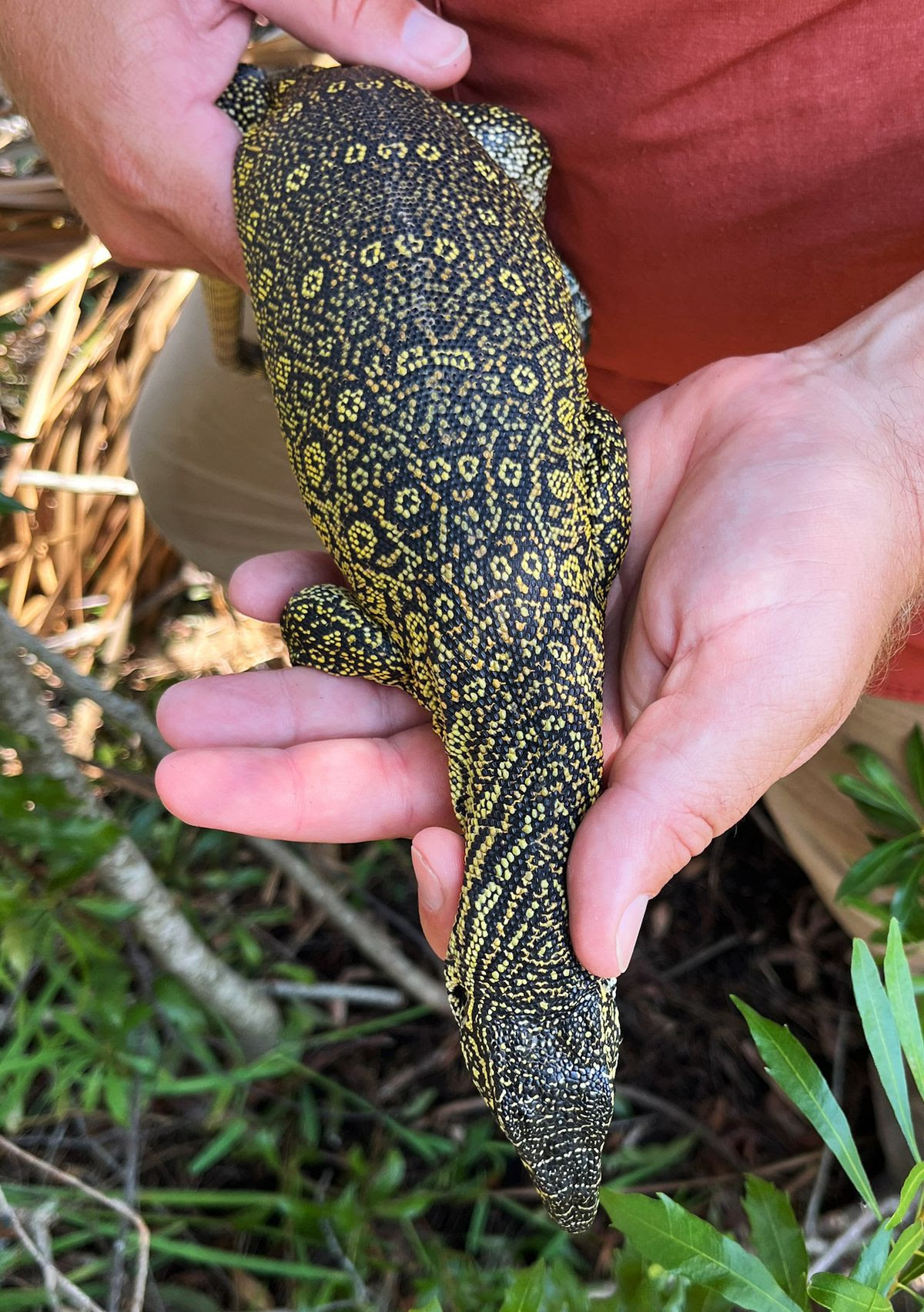:no_upscale()/cdn.vox-cdn.com/uploads/chorus_asset/file/24887614/Vox_Benji_02.jpg)
Although they’re called “monsters” and “beasts” and compared to Godzilla, Nile monitors are not aggressive toward humans and are very timid, Mulla said. Meanwhile, there’s “no evidence to suggest that Nile monitors cause population-scale impacts on native species,” he said. Data indicating that they outcompete native fauna and damage infrastructure by burrowing is similarly absent from the scientific literature, he said. (Mulla noted that a lack of evidence is not proof that these animals don’t harm the environment.)
Arguing that nonnative lizards are bad because they dig burrows can also harm the reputation of native animals, Mulla added. Native species, such as gopher tortoises, an imperiled species, dig burrows, too, he said. In fact, monitors often occupy burrows dug by other animals, though they’ll sometimes widen them.
In a statement to Vox, FWC said it “uses the best available science to determine which nonnative species could present a high risk to human health and safety, the economy, and/or the environment.” The agency declined to comment on the lack of scientific evidence linking Nile monitors, green iguanas, and cane toads to environmental harm.
In reality, the ecological impact of Nile monitor lizards is unclear. The same is true for several other nonnative species in Florida, such as green iguanas and cane toads. Blamed for harming native fauna, these animals have similarly bad, or worse, reputations — and they are often treated accordingly.
“People love sharing stories with me about the disgusting things they do [to cane toads],” said Melinda Schuman, a biologist who studies cane toads at the Conservancy of Southwest Florida. She was reluctant to share examples with me, due to their gruesome nature, but said they include shooting the animals with BB guns and whacking them with shovels and golf clubs. (FWC encourages people to kill nonnative species humanely.)
:no_upscale()/cdn.vox-cdn.com/uploads/chorus_asset/file/24887615/ALT2.jpg)
Native to Central and South America, cane toads do have some frightening features. They’re poisonous; when threatened, milky white toxins ooze from glands on their heads. That can be a problem for dogs. When curious pets bite or lick these amphibians they can get sick and, on rare occasions, die.
But again, it’s not clear how these toads are impacting Florida’s local fauna, Schuman said. Wild animals in the state may know to avoid cane toads because they’ve evolved with another native toad that also produces toxins (albeit in smaller quantities). And while cane toads will eat pretty much everything, including mice and small birds, they seem to mostly consume invertebrates, she said.
In a new study led by Schuman, researchers examined the stomach contents of cane toads found in two golf course communities in Naples. The most common invertebrates they consumed, she found, were urban pests, including insects like weevils, which feed on turf grass. (This makes a lot of sense, as cane toads were originally brought to Florida to control agricultural pests, Schuman said.)
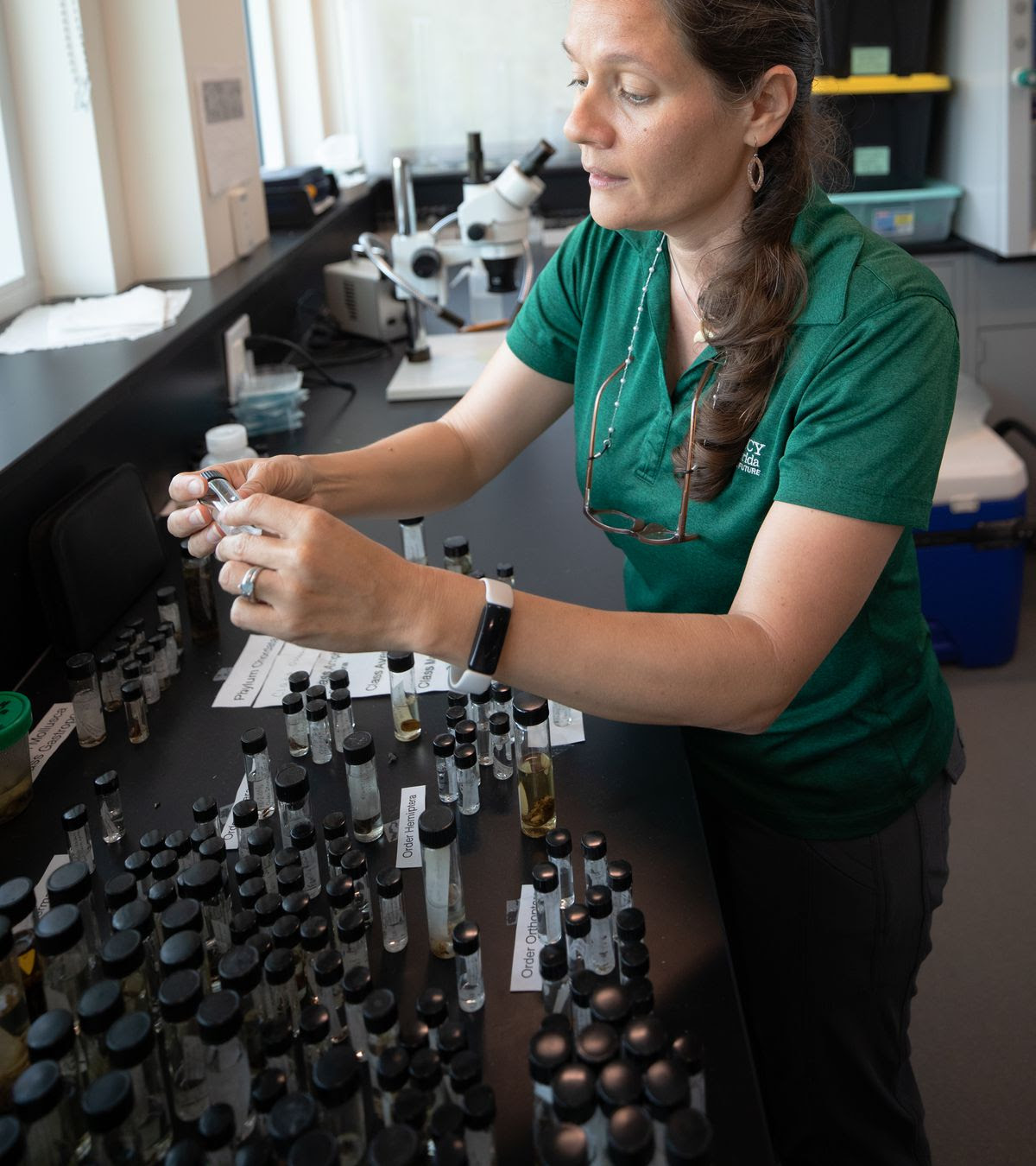:no_upscale()/cdn.vox-cdn.com/uploads/chorus_asset/file/24887618/19_Benji.jpg)
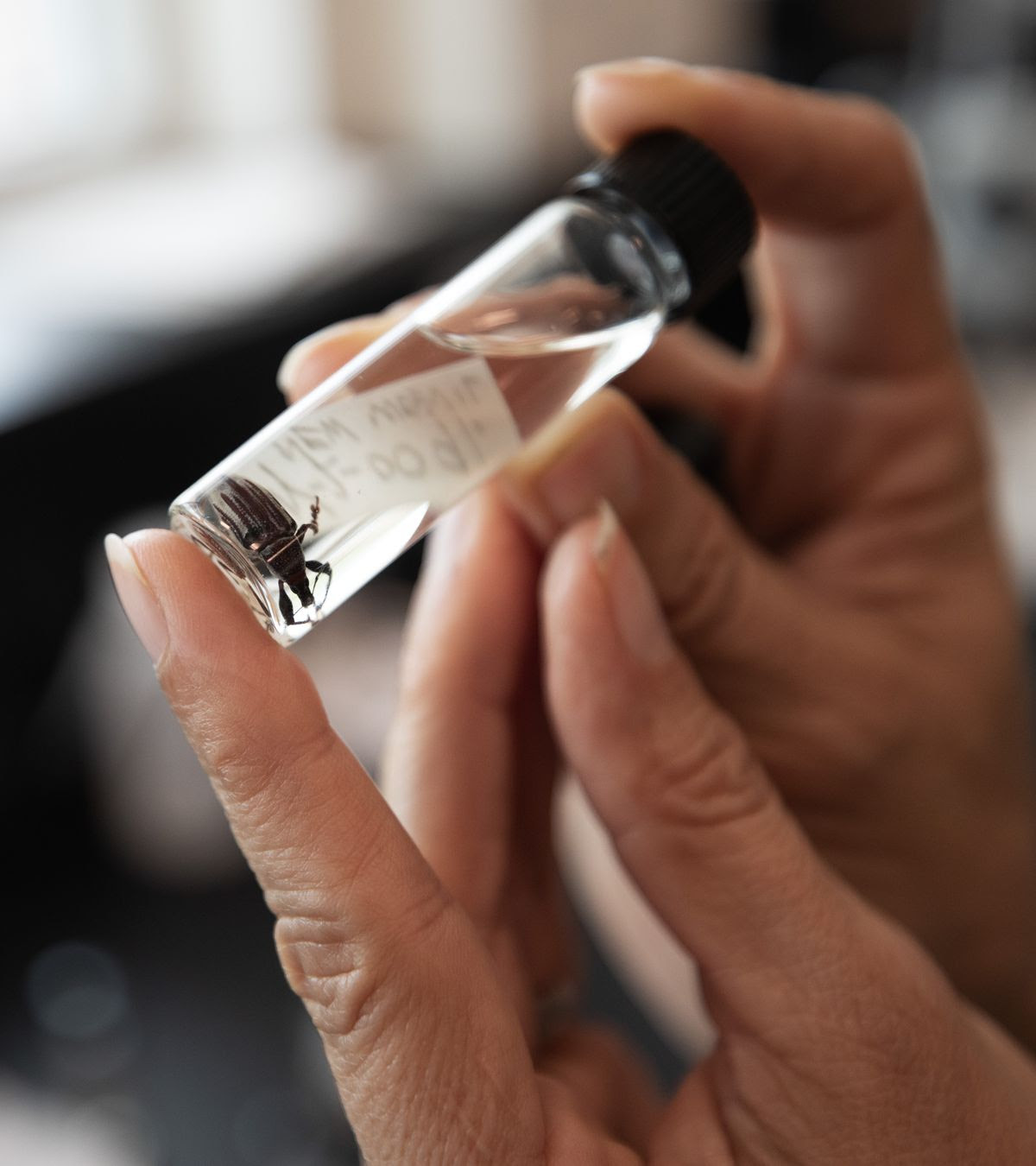:no_upscale()/cdn.vox-cdn.com/uploads/chorus_asset/file/24887620/18_Benji.jpg)
Ultimately, cane toads, iguanas, and many other nonnative species in Florida seem to be more of a nuisance to humans than a real blight on the environment. People understandably don’t want their pets to get sick. They don’t want iguanas gorging on plants in their gardens. (Residents also complain that the loud croaks of cane toads and Cuban tree frogs can make it hard to sleep.)
“We tend to blur the lines between what’s a human inconvenience versus what’s an ecological problem,” Mulla said.
That doesn’t mean that the desire to rid Florida of nonnative animals is never justified. But we should be clear when we’re getting rid of them for humans’ sake — for our convenience or our economies. Hunting down nonnative species is not always some selfless act to protect the environment.
Florida, like any spot on Earth, will never return to some historic version of itself. Over hundreds of years, humans have irreversibly transformed the environment. We’ve razed natural habitats and created new ones. It’s no surprise that in this new ecosystem, there are new species; we’ve literally created novel ecological niches for them to occupy. But the question still stands: What do we do with all of them?
One idea is to simply embrace nonnative species. From a somewhat fringe perspective, nonnative species actually increase the state’s biodiversity, a common measure of ecological health. As far as scientists know, exotics have yet to drive any native species extinct; they only increase the total number of species in Florida ecosystems, according to Ty Park, the owner of Iguanaland, a reptile zoo and breeding facility near Sarasota.
“The world has changed,” Park said. “We have to live with that.”
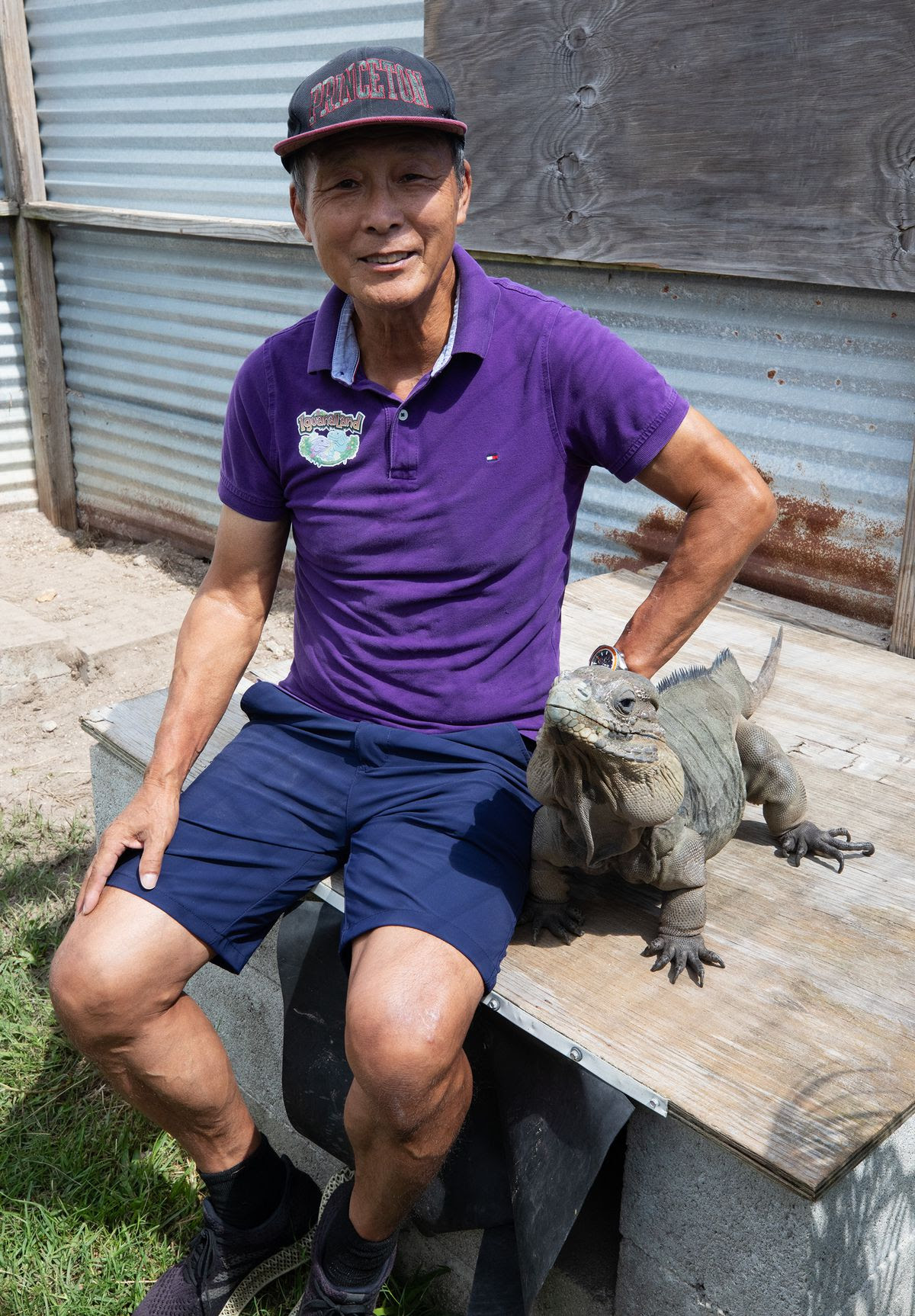:no_upscale()/cdn.vox-cdn.com/uploads/chorus_asset/file/24887684/20_Benji.jpg)
There’s also little evidence that eliminating invasive species once they’re established in Florida can even work, according to Sean Doody, an invasive species expert and reptile researcher at the University of South Florida. “Eradicating or stopping the spread of tegus, iguanas, brown anoles, Cuban tree frogs, and Burmese pythons into suitable habitats with appropriate climates and resources is like trying to stop a hurricane,” Doody wrote in a recent book review. “It cannot be done.”
Consider Florida’s python hunting challenge. During the highly publicized competition, snake hunters compete to kill as many pythons as possible for a grand prize of $10,000. These sorts of competitions remove only “modest numbers” of Burmese pythons, and “will not result in a measurable reduction in numbers,” Doody wrote in his review. “What it will do is (falsely) convince the public that it is helping to save the native mammals in those parks.”
There is a flip side. Even if nonnative animals are not driving local wildlife extinct, they’re obviously altering ecosystems that are already under siege. Burmese pythons are apex predators, and they need to eat. Native toads can mistake cane toads for mates, potentially screwing with their chance at reproduction. And in many cases, exotic species are competing with local ones for food and other resources. Why not err on the side of caution and get rid of as many of them as possible?
:no_upscale()/cdn.vox-cdn.com/uploads/chorus_asset/file/24902486/Collage3.png)
Perhaps the best approach lies somewhere in the middle. Florida should measure the impacts of nonnative species and go from there. That sounds basic, but that’s not how management works today in Florida, Doody said; the science to support whether something is truly harmful is lacking. (Mazzotti, the University of Florida ecologist, makes the point that when a new invasive species is discovered, it pays to act quickly, even without sufficient evidence of harm, so the animal doesn’t have time to spread beyond control.)
Bartoszek’s work is a good example of where eradication efforts might pay off. Instead of killing every python he encounters, his team tracks male snakes and uses them as sentinels. The males lead them to females that are much larger. Over the last decade, his team has removed more than 31,000 pounds of snakes.
The pet trade bears responsibility, too, as it remains a fuel for the spread of nonnative species. Reptile breeders I spoke to acknowledged that the industry has played a role in introductions, but they say it’s more careful now. There’s a way to do it right, such as breeding smaller reptiles that owners are less likely to release and in colors that make them an easy target for predators, should they ever get out. (FWC has also banned the breeding and possession of a number of nonnative species including tegus and green iguanas.)
This article was funded in part by gifts from Vox contributors.
You can help us make more work like this and keep it free for everybody by making a gift at Vox.com/givenow.
What we shouldn’t do is rally the public against nonnative animals like iguanas and tegus simply because we don’t like them. This is at best unhelpful and at worst cruel. Sure, it’s easy to demonize animals we find icky and blame them for destroying the environment. But in reality, it’s us; it’s humans who have been wreaking ecological havoc, allowing these species to thrive in the first place. Animus toward nonnative species is often little more than a distraction from our own behavior.
The truth is these animals are here because of humans — because we altered the environment in such a way that allows them to thrive. “They seem to want to live where we live,” Schuman said of cane toads. “We provide everything they need to be comfortable. We bring bugs for them to eat. We turn on sprinklers at night. We’ve made it a utopia.”
On my four-day safari, in which I ultimately spotted more than 20 species, I also learned that it’s possible to admire and respect nonnative species, while, at the same time, acknowledging that they can be harmful.
I visited a small park in Miami on my last day in Florida, where I’d heard there were exotic parrots. I saw the birds flying overhead before I even exited my rental car. These weren’t just any parrots but blue and gold macaws — majestic creatures, measuring 3 feet from head to tail, with colors so brilliant they looked artificial.
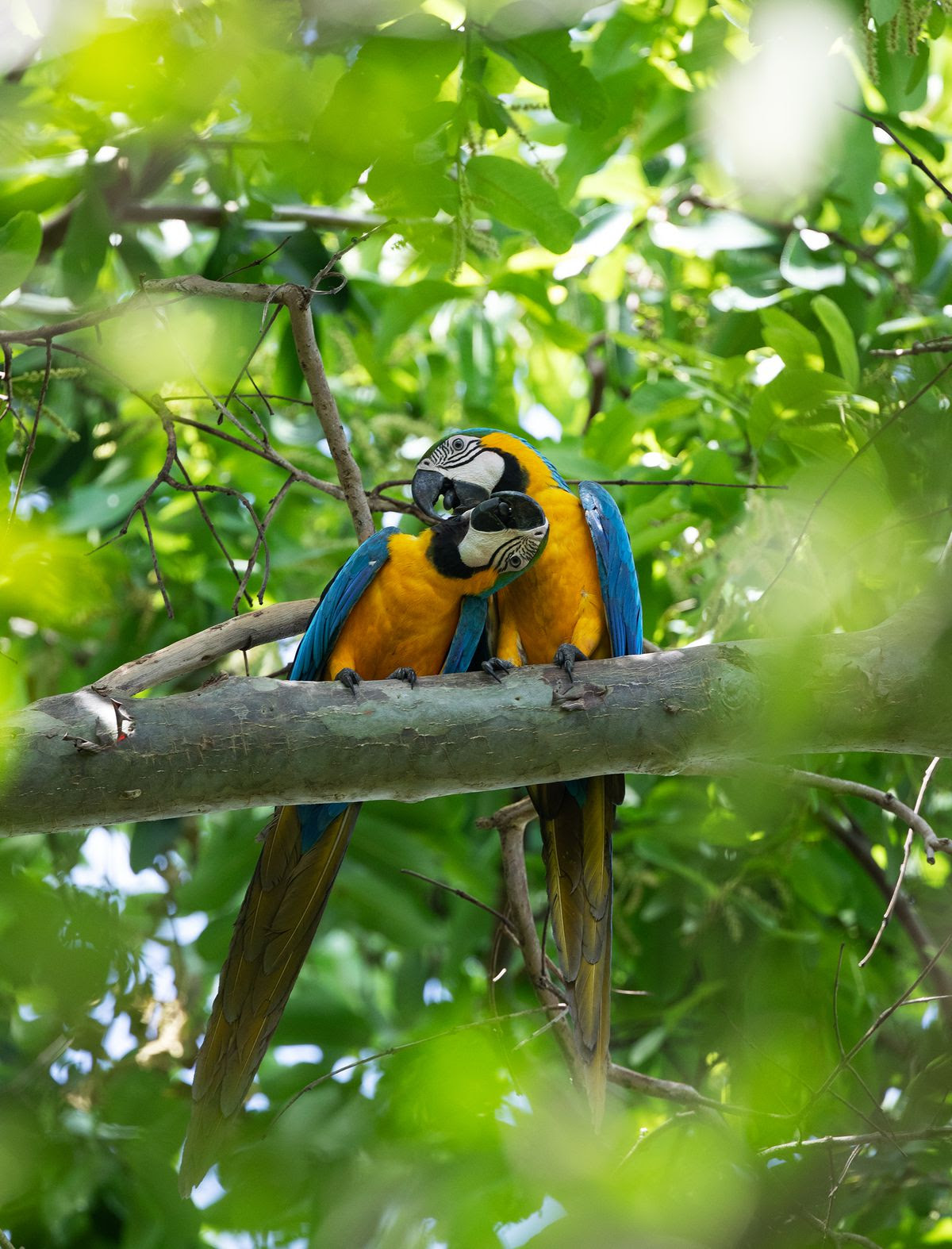:no_upscale()/cdn.vox-cdn.com/uploads/chorus_asset/file/24887722/21_Benji.jpg)
:no_upscale()/cdn.vox-cdn.com/uploads/chorus_asset/file/24887724/Macaw2.jpg)
I didn’t have to travel to the jungles of Central or South America, their native range, to see them; I just had to drive 15 minutes from my hotel. They squawked and preened each other and fought over water. These animals are not from here, but this is their home.

